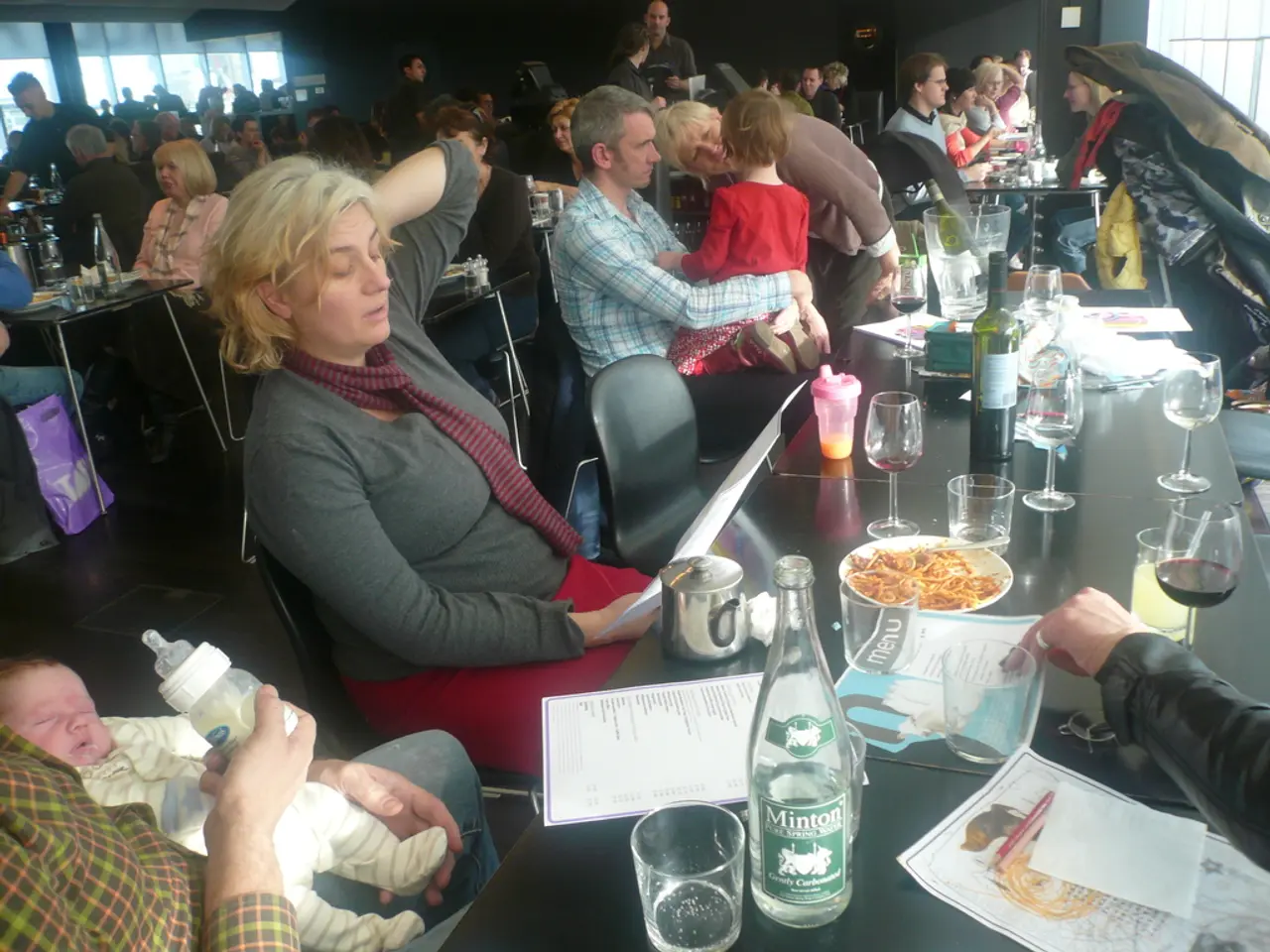Experience Immersive Dining in Virtual Reality Restaurants
Virtual Dining Takes a Leap with Restaurant VR
Restaurant Virtual Reality (VR) is revolutionizing the dining experience, offering customers a chance to explore iconic food destinations across the globe without leaving their seats. From the vineyards of France to the bustling street markets of Thailand, diners can now embark on virtual tours that transport them to another world [1].
This immersive technology, a fusion of VR headsets, augmented reality (AR), and interactive screens, provides a unique and engaging experience that enhances customer engagement [2]. It offers better customer service through virtual guides, personalized VR dining experiences, and real-time interactions with chefs and staff [3].
The virtual environments in restaurant VR are meticulously crafted, with 3D modeling and spatial audio creating a sense of immersion that is hard to match. Some restaurants even host VR pop-up events, enabling diners to experience meals in fantastical settings or alongside famous historical figures [1].
One of the benefits of restaurant VR is its potential to reduce food waste by creating virtual food experiences without the environmental impact of sourcing exotic or hard-to-find dishes [4]. High-end restaurants are hosting VR dining events where customers can join a virtual dinner with celebrity chefs or dine in historical or futuristic settings [1].
Interactive VR menus display detailed dishes, ingredients, and even nutritional information using 3D holograms or AR-powered screens [2]. Diners can interact with these menus, making meal selection more interactive and enjoyable [5].
However, not everyone feels comfortable using VR headsets, and some diners may feel disoriented or uncomfortable during extended VR sessions [6]. The cost of implementing restaurant VR is substantial, including the initial investment for VR hardware, software, and development, as well as ongoing costs for maintenance and updates [7].
Looking forward, VR in dining is expected to contribute to a broader tech-driven transformation in the restaurant industry. It will enable customers to virtually "travel" to culinary destinations from their seats, enhancing experiential dining and boosting personalization [1]. The industry is also integrating AI, automation, robotic kitchens, and advanced analytics to improve efficiency, customization, and customer service [2].
For example, AI-powered personalization, automated ordering systems, and immersive tech like VR will help restaurants differentiate their offerings, reduce wait times, and create unique social media-worthy experiences [3]. The QSR (Quick Service Restaurant) market is also exploring AR/VR tools for chef training and operations, signaling VR’s broader operational impact beyond customer-facing applications [2][3][4].
Despite these advances, VR restaurants remain a premium or novelty experience rather than widespread standard practice due to costs and technological requirements. Nevertheless, VR’s future impact involves elevating dining into a multisensory entertainment spectacle, increasing customer engagement, and supporting hybrid models of real and virtual dining worlds [1][3][4]. As technology matures and becomes more affordable, VR could shift from high-end experimental venues into more mainstream chains, influencing dining habits, marketing, and the spatial design of restaurants in the next 5–10 years [1][3][4].
However, glitches, technical difficulties, and the need for constant updates can disrupt the restaurant virtual reality experience [6]. The integration of artificial intelligence (AI) and robotics could lead to highly personalized dining experiences tailored to individual preferences [8].
References: [1] Rist, J. (2020). The Future of Virtual Reality in Restaurants. Retrieved from https://www.restauranttechnologyguide.com/virtual-reality-restaurants/ [2] Lomas, N. (2021). Virtual dining is the next big thing in restaurants. Here's why. Retrieved from https://techcrunch.com/2021/03/11/virtual-dining-is-the-next-big-thing-in-restaurants-heres-why/ [3] Rist, J. (2021). The Future of Virtual Reality in Restaurants. Retrieved from https://www.restauranttechnologyguide.com/virtual-reality-restaurants/ [4] Soble, N. (2021). Virtual Reality in Restaurants: A New Era of Dining. Retrieved from https://www.restaurantbusinessonline.com/technology/virtual-reality-in-restaurants-a-new-era-of-dining [5] Rist, J. (2020). The Future of Virtual Reality in Restaurants. Retrieved from https://www.restauranttechnologyguide.com/virtual-reality-restaurants/ [6] Rist, J. (2020). The Future of Virtual Reality in Restaurants. Retrieved from https://www.restauranttechnologyguide.com/virtual-reality-restaurants/ [7] Rist, J. (2020). The Future of Virtual Reality in Restaurants. Retrieved from https://www.restauranttechnologyguide.com/virtual-reality-restaurants/ [8] Rist, J. (2020). The Future of Virtual Reality in Restaurants. Retrieved from https://www.restauranttechnologyguide.com/virtual-reality-restaurants/
- This immersive technology, in addition to VR headsets and interactive screens, could potentially integrate advanced gadgets like AI-powered personal devices to further enhance the dining experience, allowing diners to personalize their virtual surroundings and food choices.
- As restaurant VR continues to evolve, it might also revolutionize food-and-drink industries by introducing digital platforms for food education, offering classes and cooking demonstrations using holographic technology, thereby transforming the lifestyle of amateur cooks and food enthusiasts.




